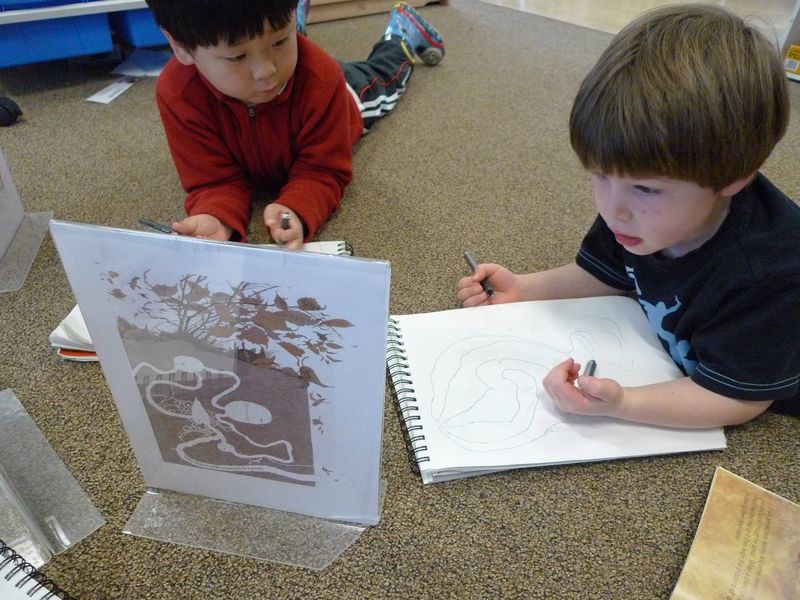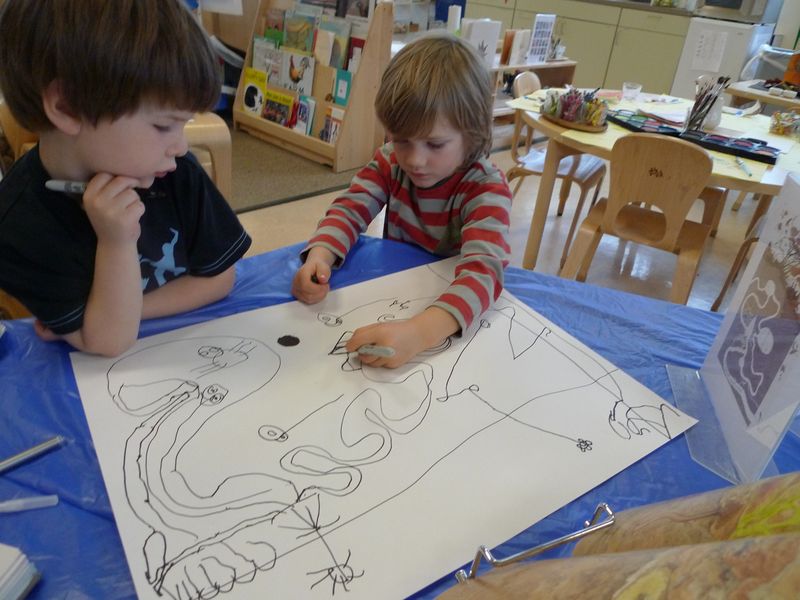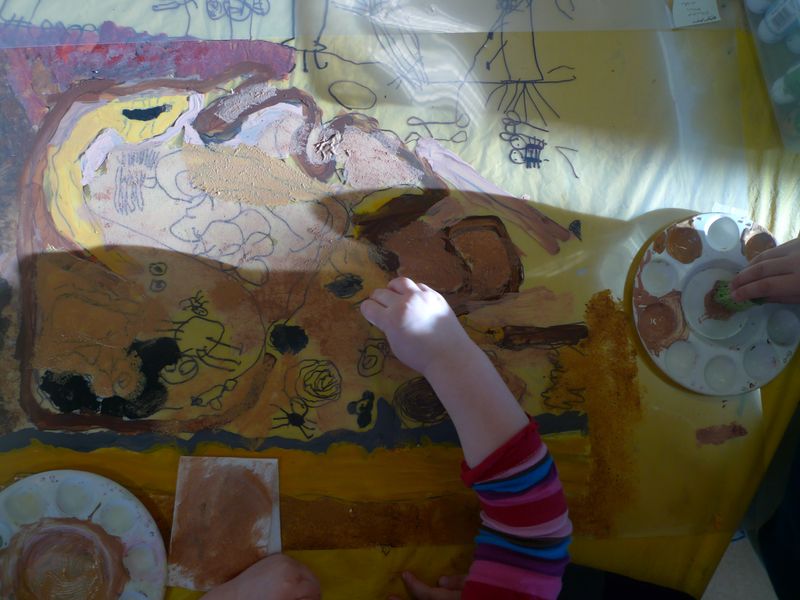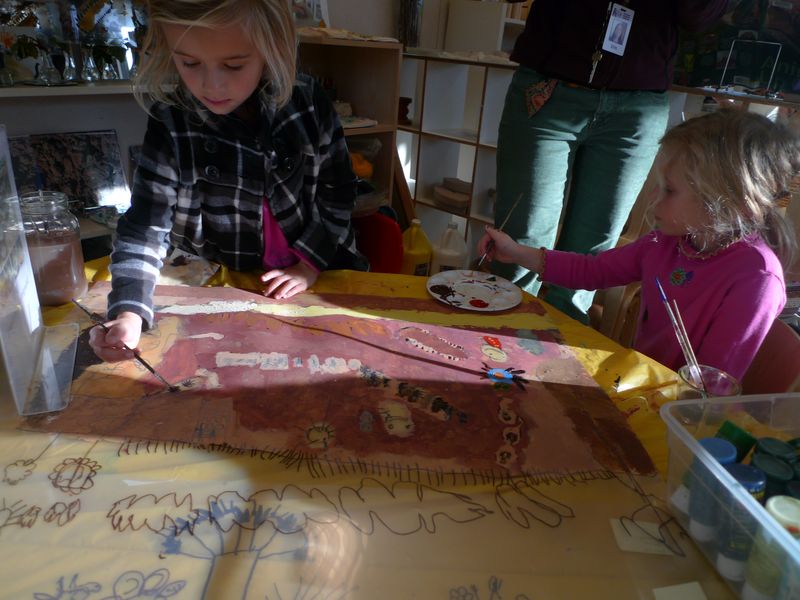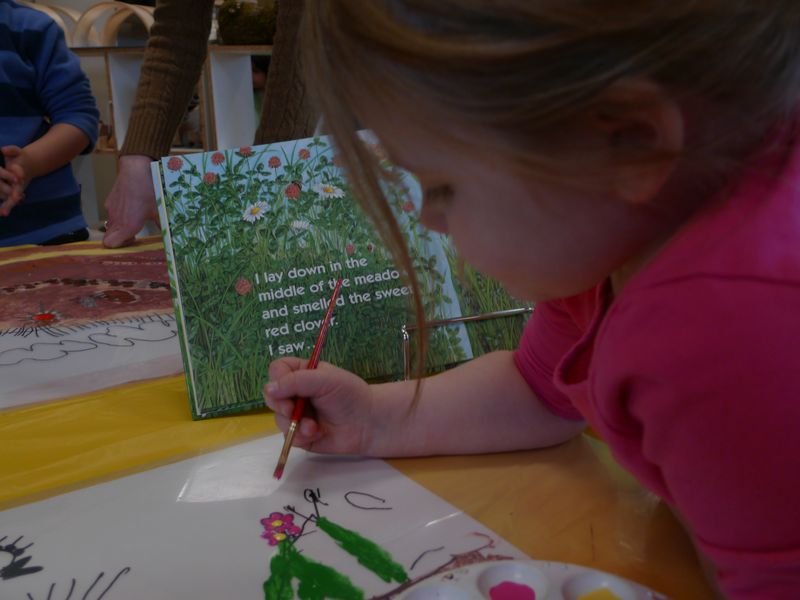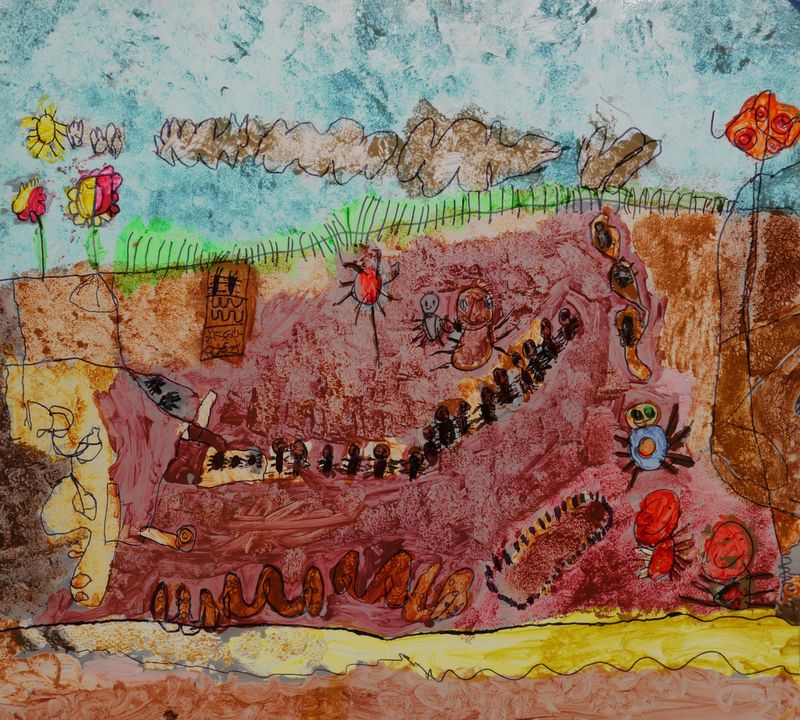Imagining Life Underground
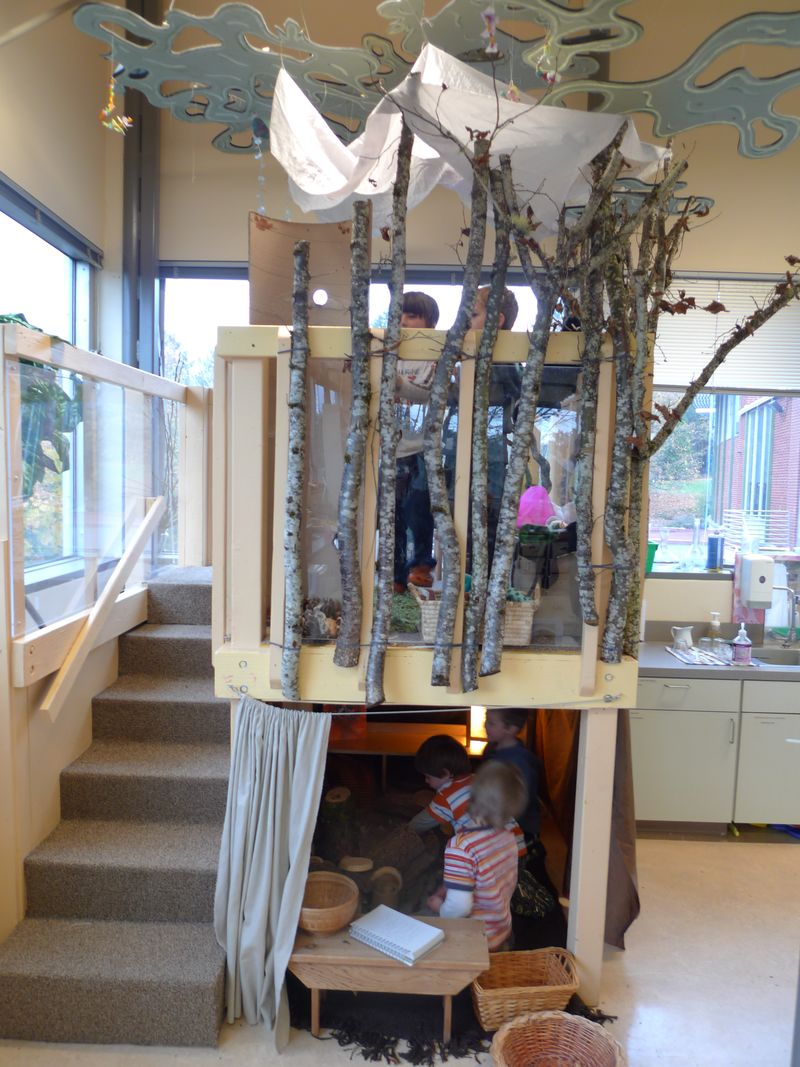
We wanted to catch you up on some of the Project Work that came out of our work this fall. The children’s energy focused a lot on the underground and the different animals that make their homes there. With a little help from our research at the zoo, our schema about the underground and one of our favorite books, In My Dreams I Can Fly by Eveline Hasler, we wondered:
What do we imagine underground to look like?
What would an underground space look like inside of our classroom?
In November, over a long weekend, the teachers took the children’s ideas and theories and created an underground world in the bottom loft. The children were met with a cozy, dark space filled with roots, critters, wood, enclosures for dens and nuts and seeds for food. As they tunneled underground the children transformed into creatures who were busy getting ready for the upcoming winter. Not long after, the children voiced that the upstairs loft should be the “above ground” to our new underground space. Together with the children, we created a forest of trees and spaces for animals to play and work above the ground, just like they do below.

One day as Finn and Lucius played in the underground, they were distracted by the mirror that lives on the wall. Together they decided that instead of seeing themselves, they should see what it really looks like underground. We invited them to capture their theories and ideas of what an underground world would look like through drawing. We invited more friends to help us, and even took a trip to Opal 1 to see their ant farm to gather ideas and inspiration.
The two boys then created a mural of what you might see if you could crawl underground.
We transferred it on clear paper and invited the whole class to help us transfer our lines and ideas. We also invited the children to add things to the mural that might be missing. More ants, snakes, trees, roots and tunnels appeared on our mural due to this collaboration.
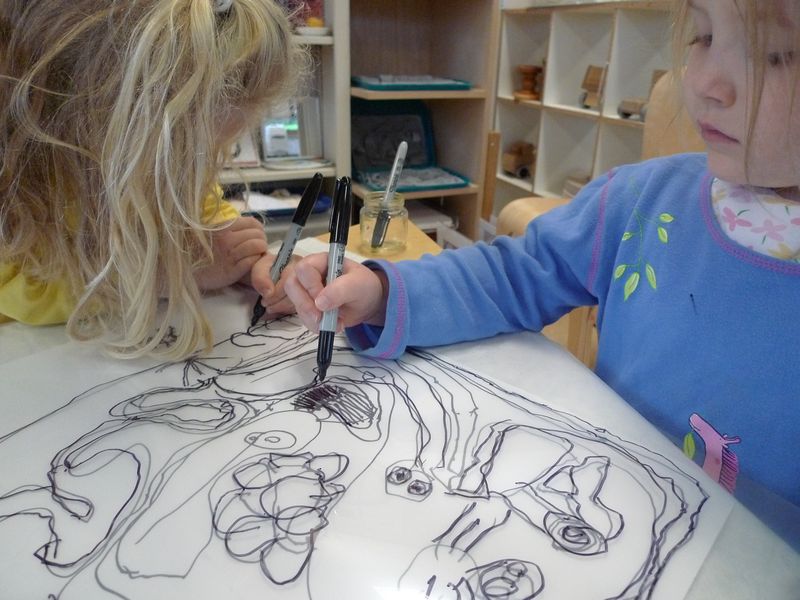
After the mural was drawn and transferred to transparent paper, it was time to think about the colors that were needed to make our underground complete. Working with tempera paints first, the children played and looked closely at underground materials like dirt, roots and bugs to come up with an underground palette. Next, the children looked through the acrylic paints to choose the colors that would make up their underground: browns, dark yellows, black, gray, and dark reds.
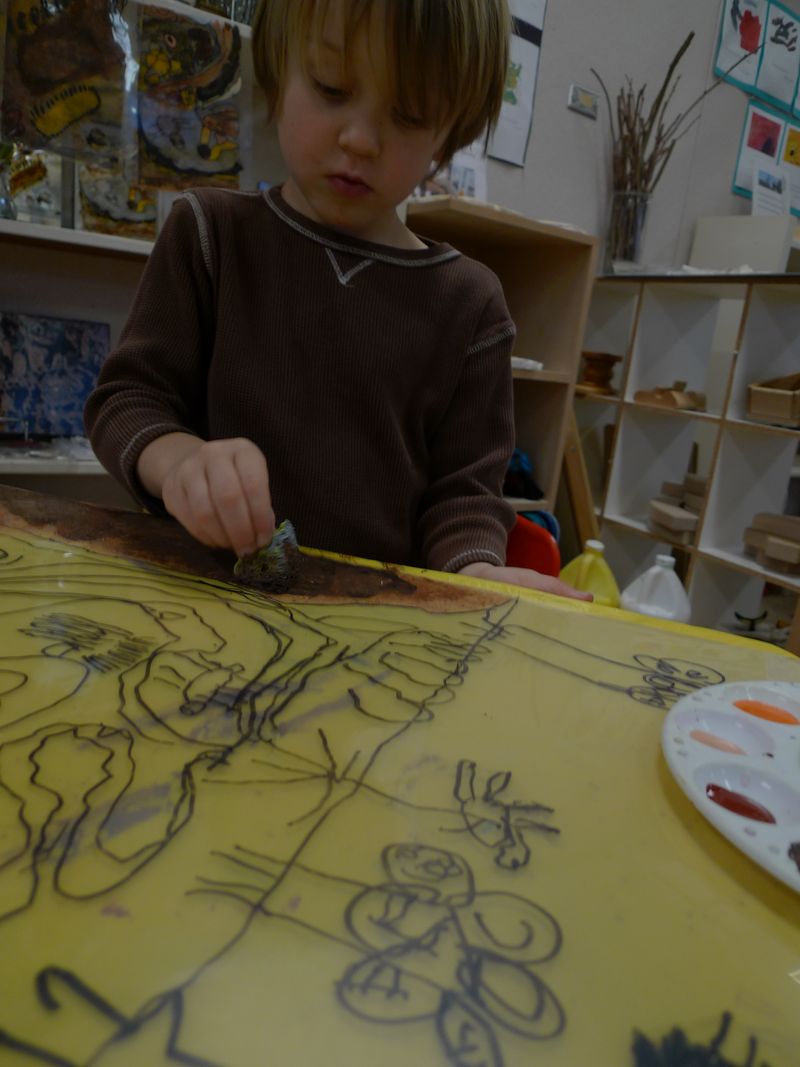
Carefully, they used different techniques to add color and texture to their underground world.
The mural now lives in two places in our classroom: one half lives "underground" as a reminder of the setting of the children's current play and the other half lives near the risers for all to revel in the beauty of teamwork, collaboration, inquiry and imagination.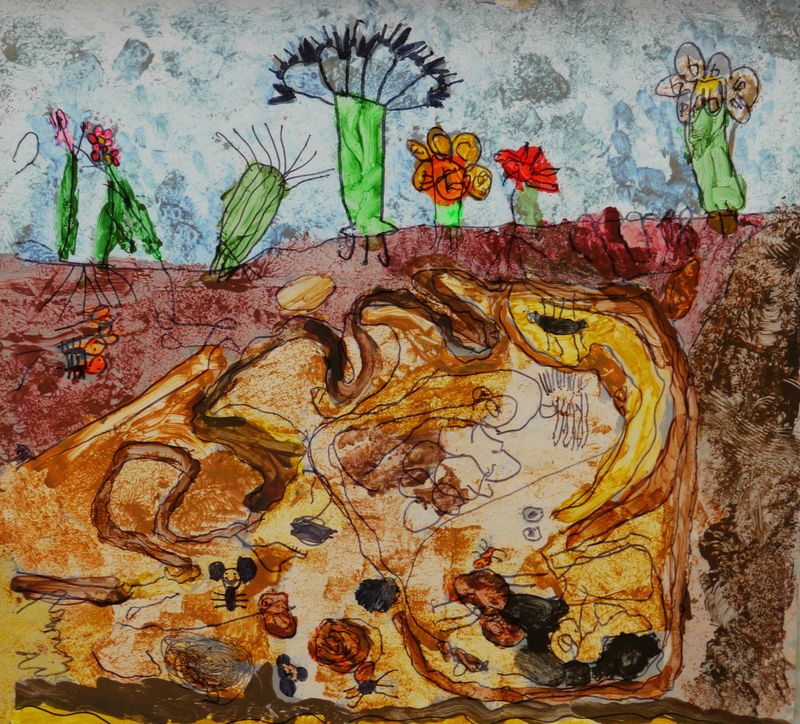
The mural and the children's interest in the underground brings out the big curricular idea of this year: helping children to notice their connection to the natural world. We began the school year with this intention, but unsure where it would take us before we met the children. As their energy and interests have unfolded, so has our current project.

